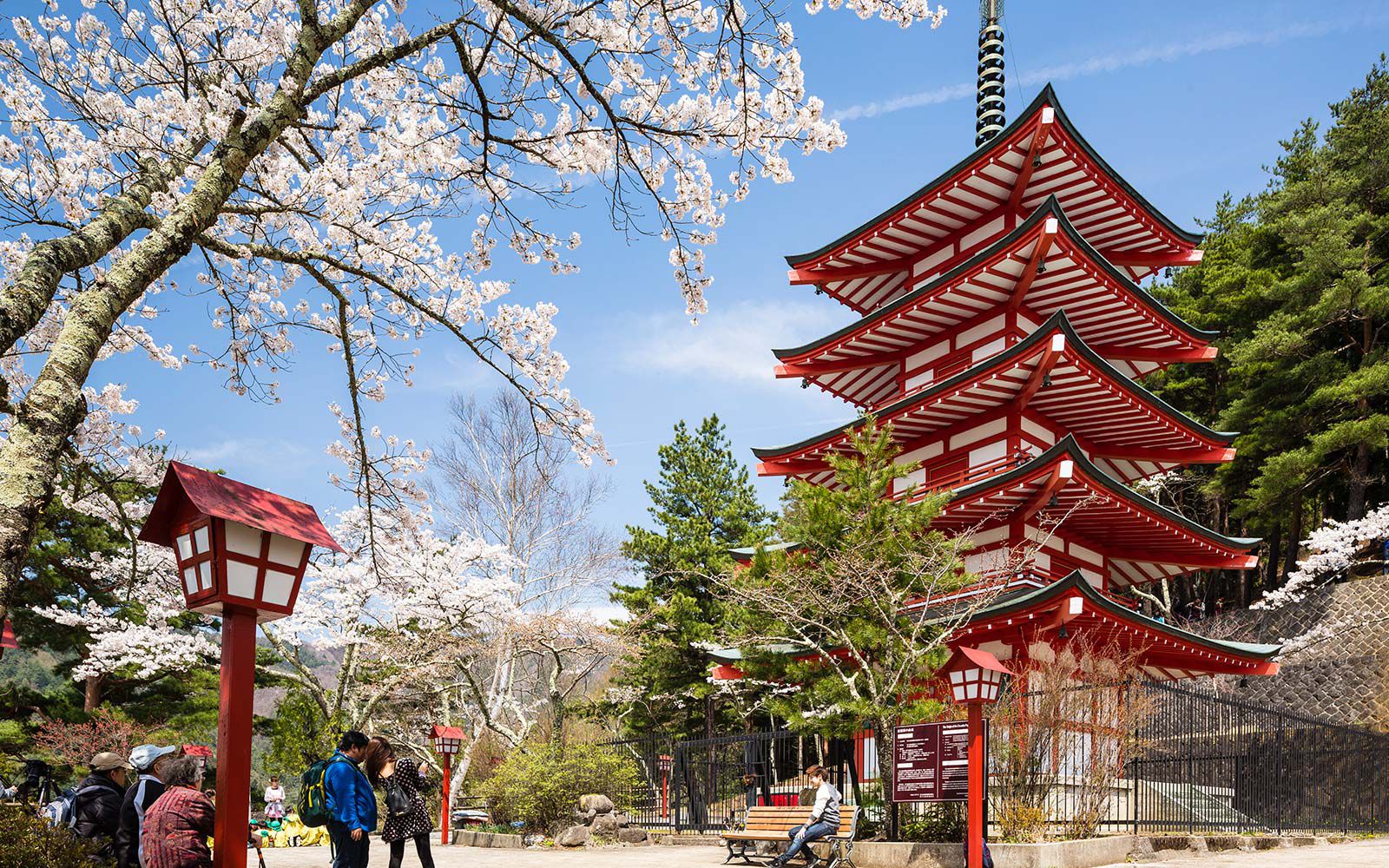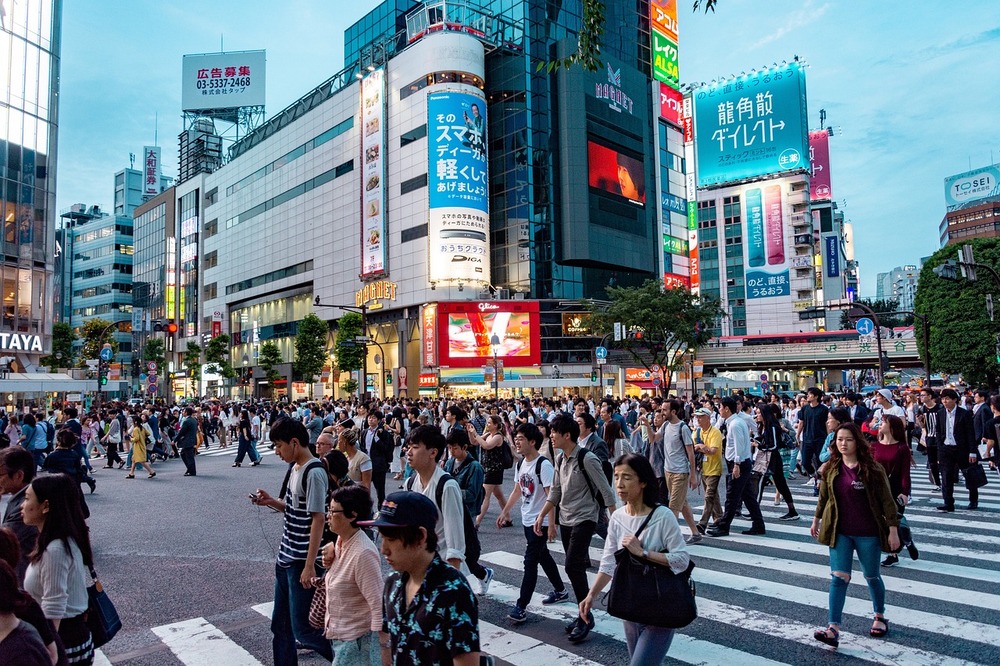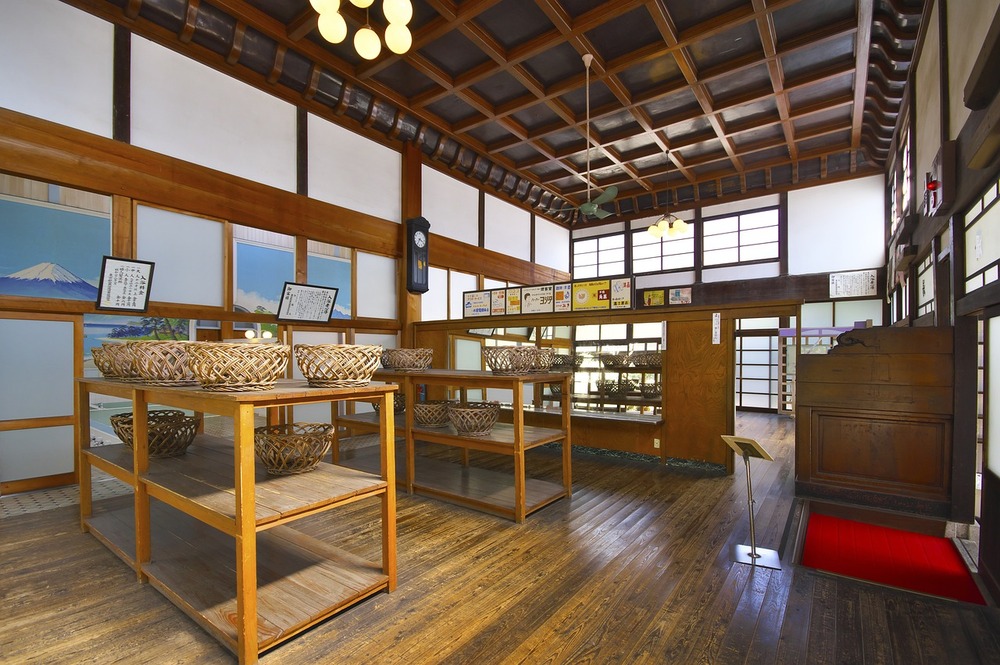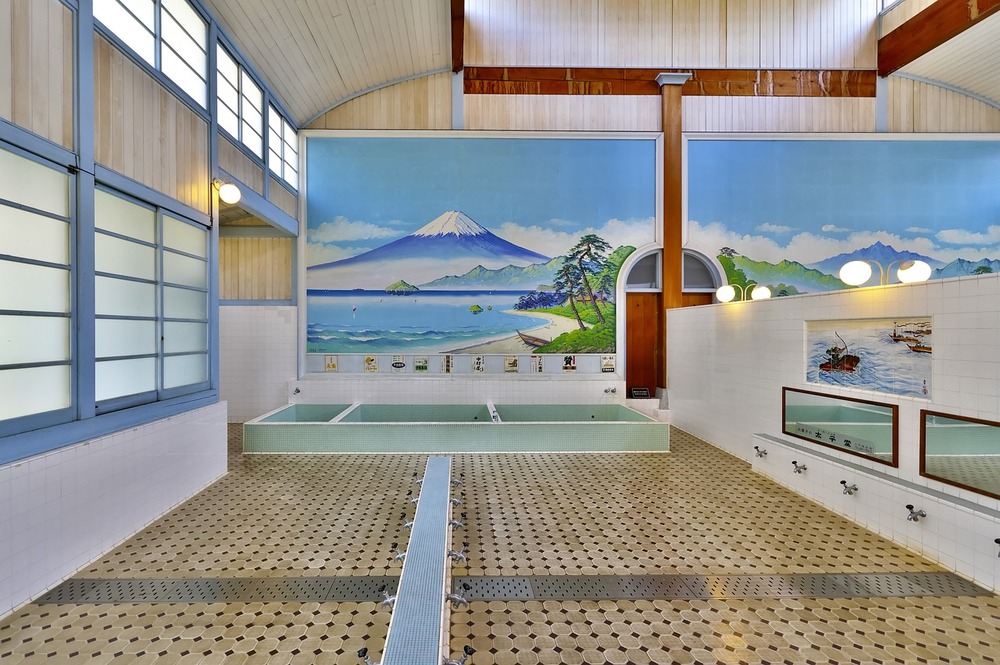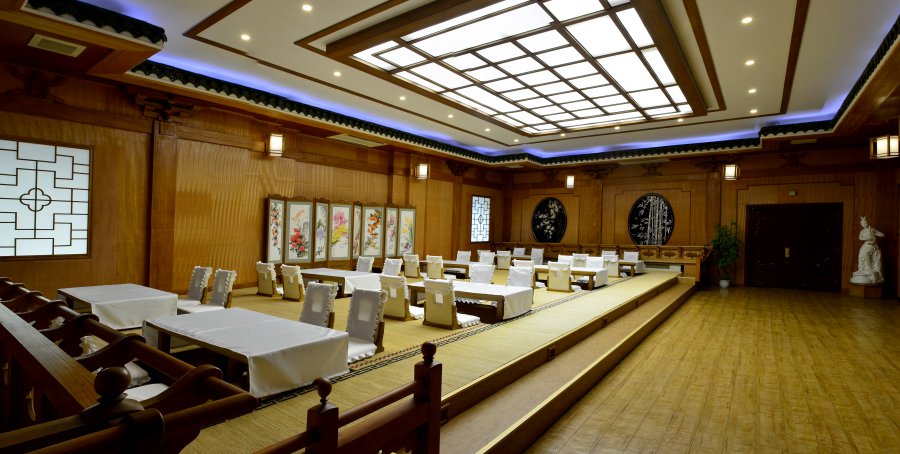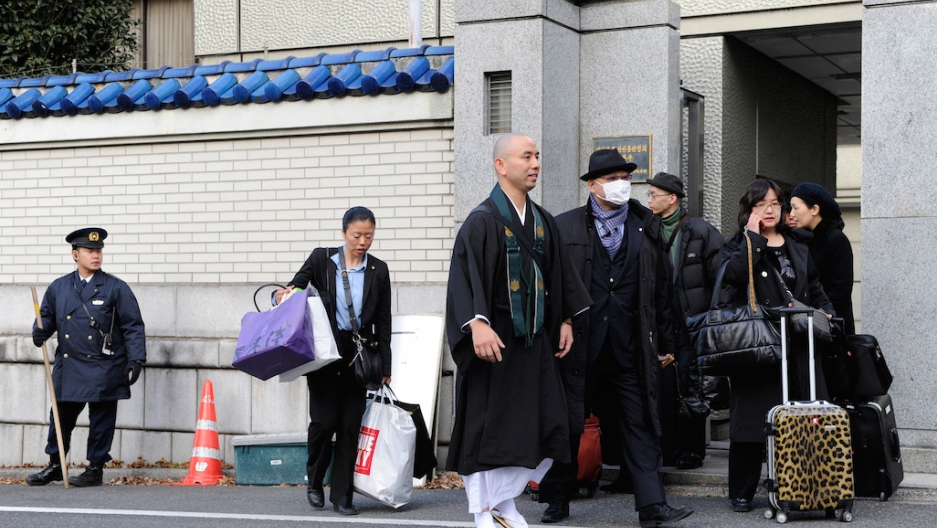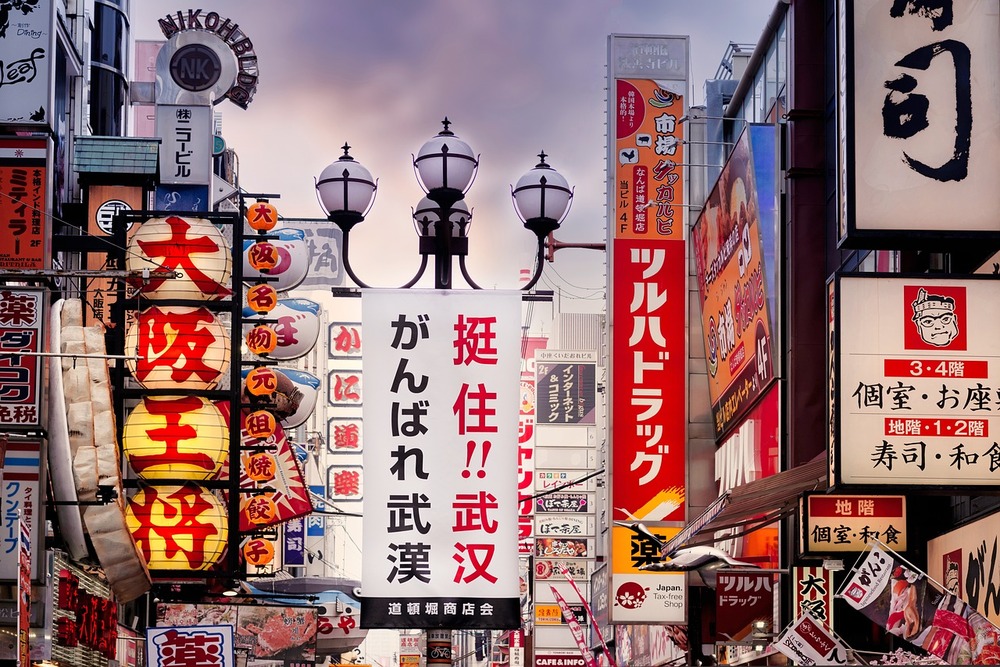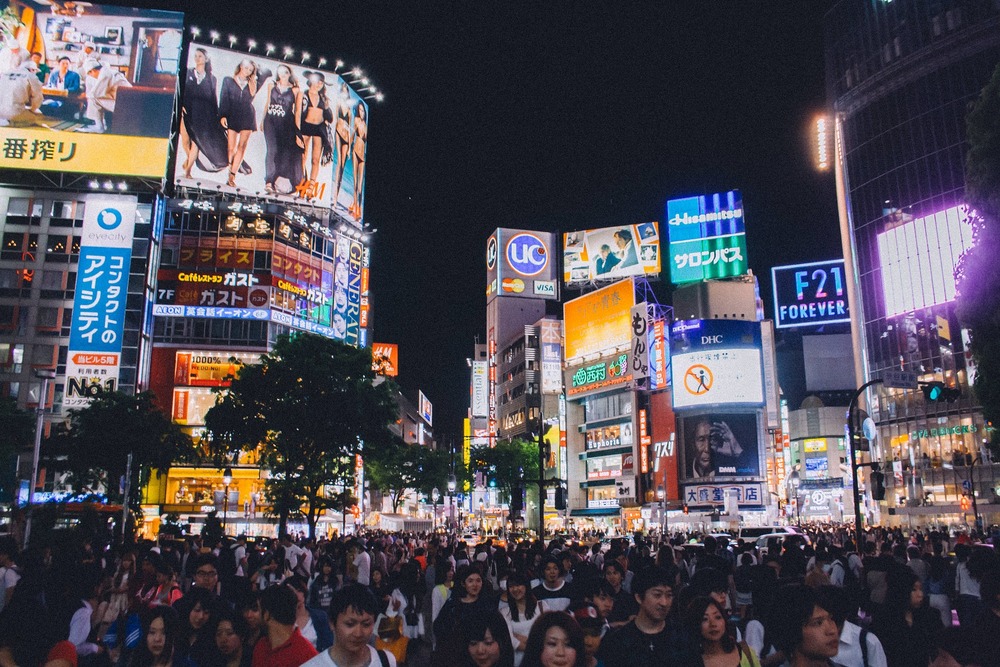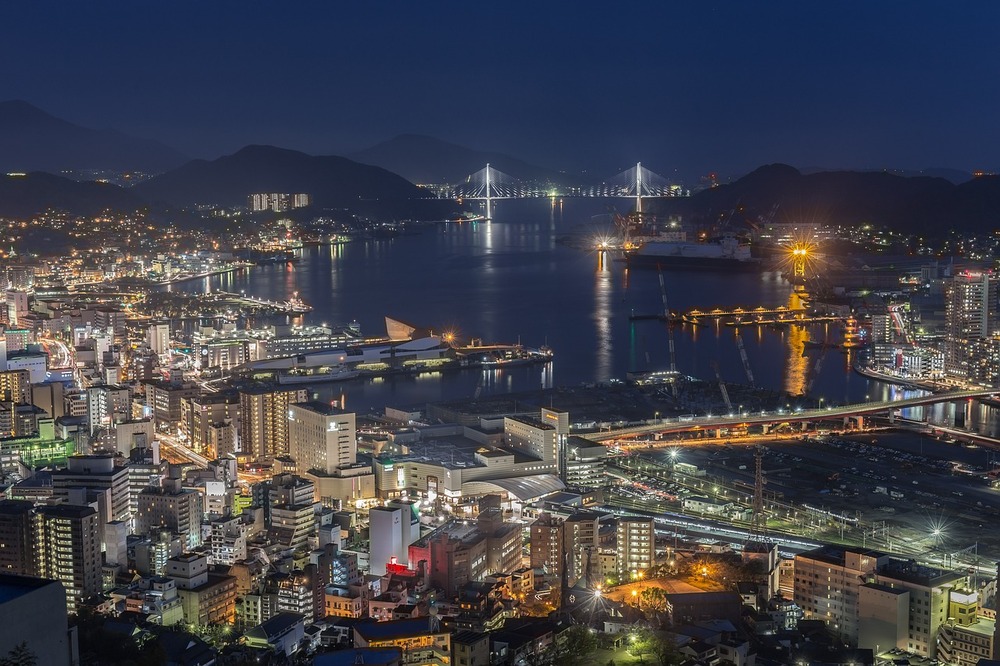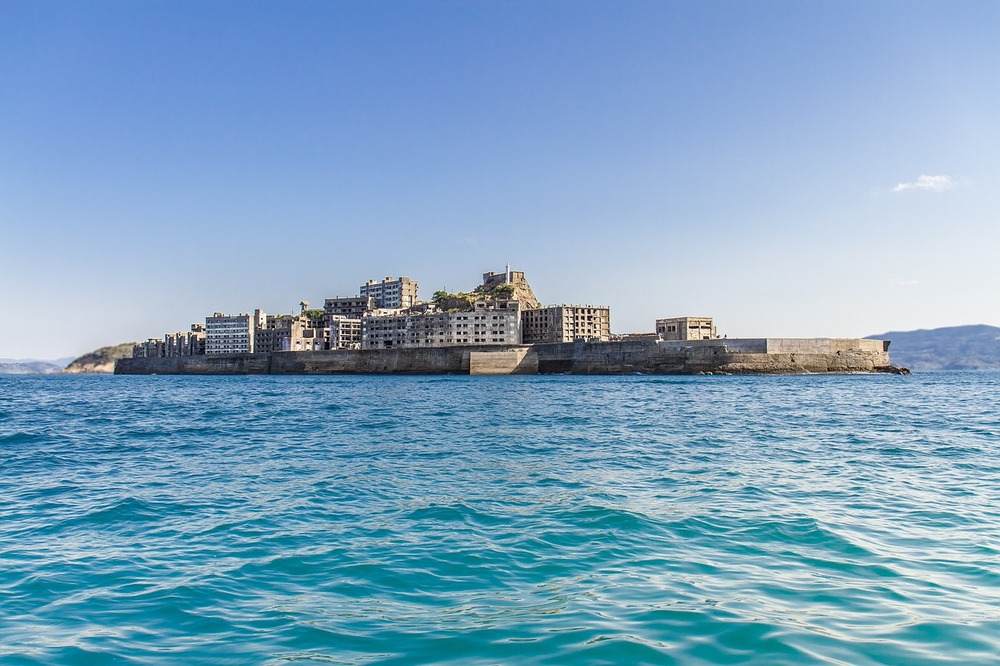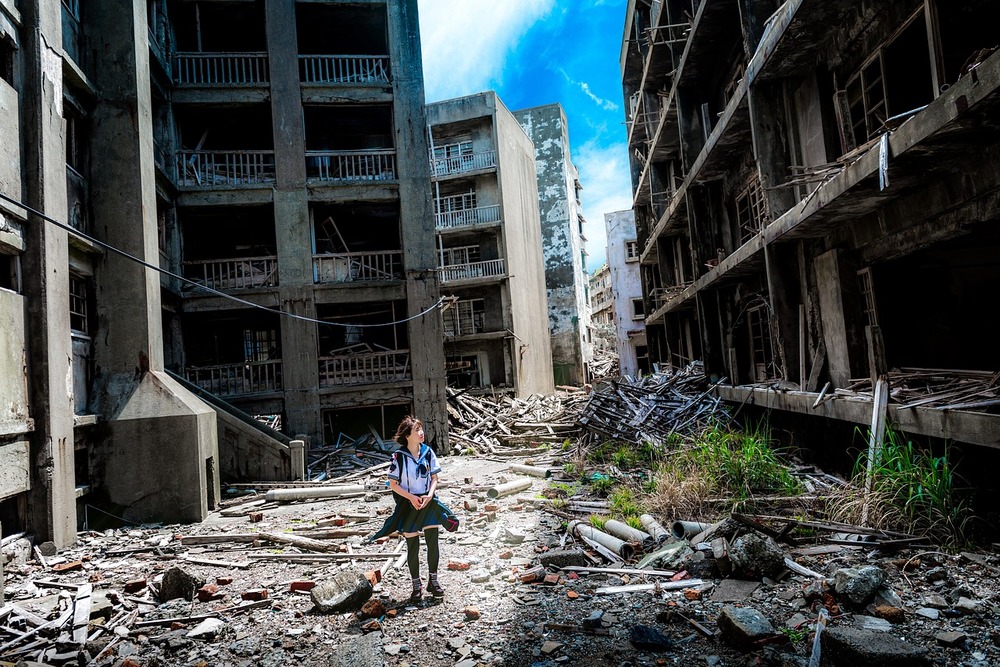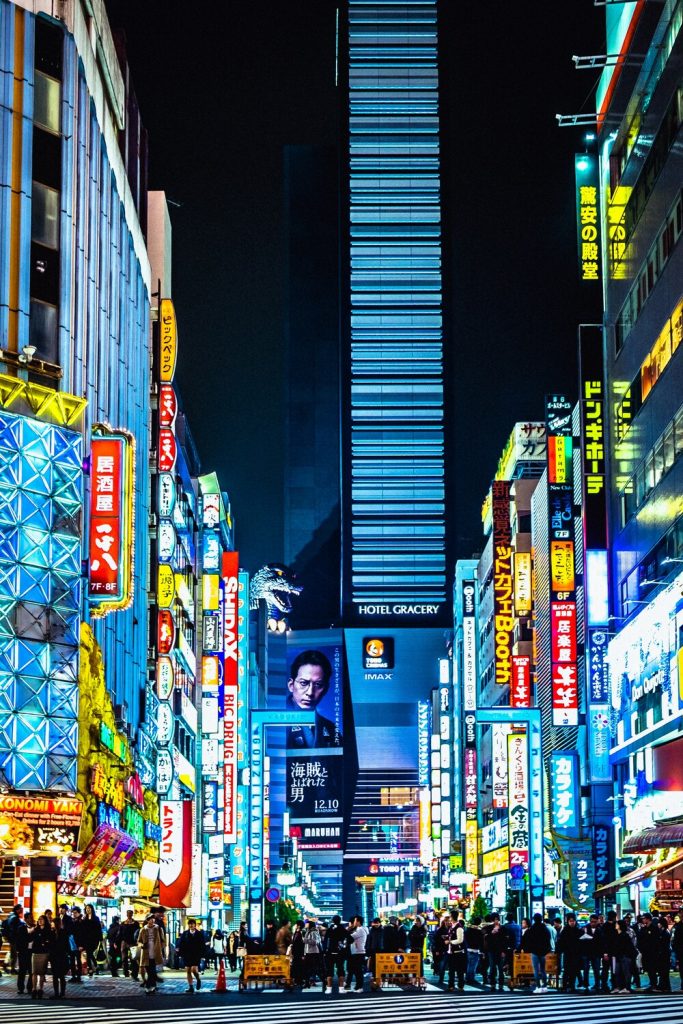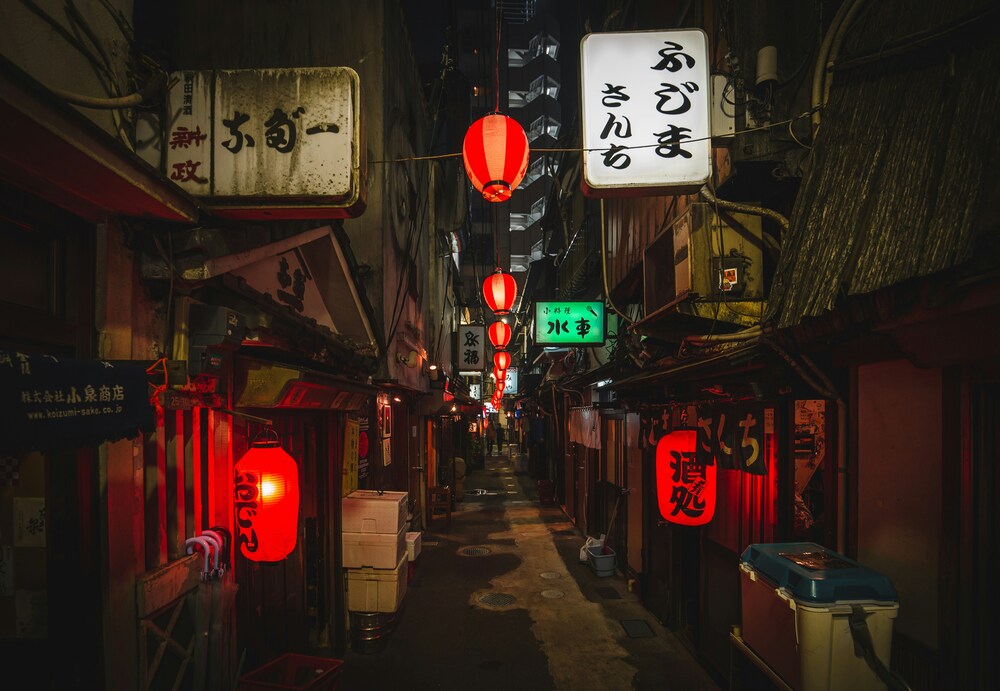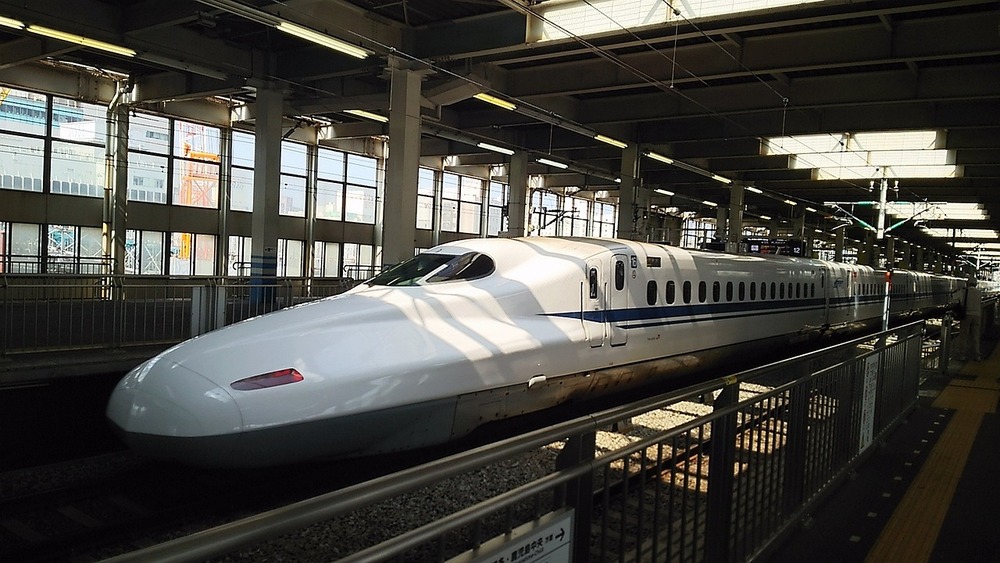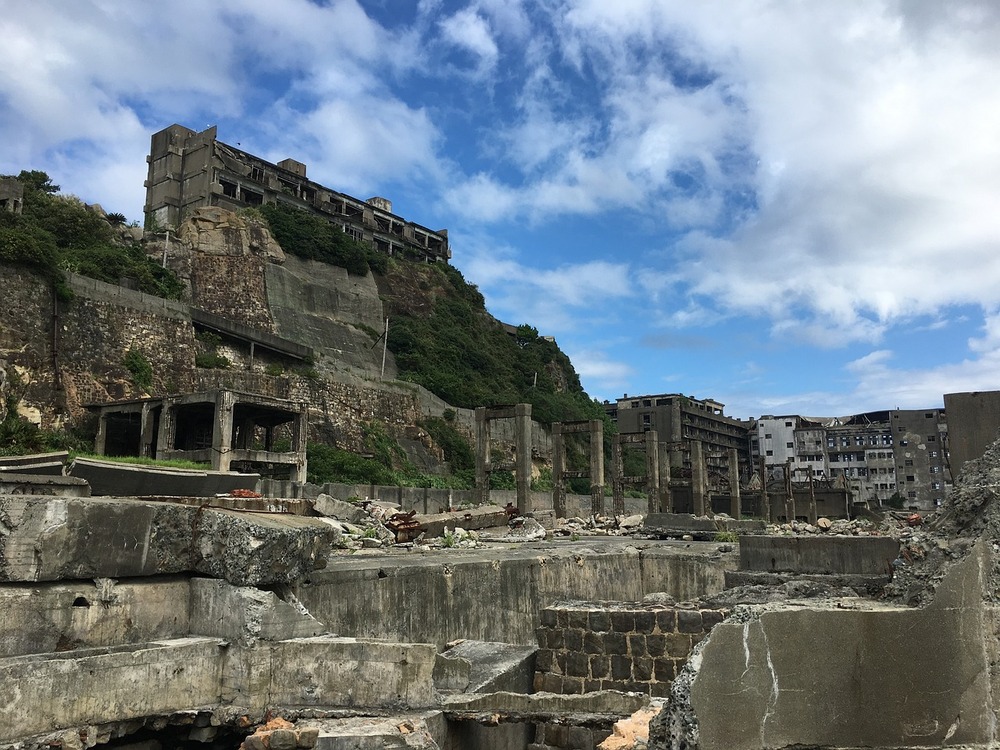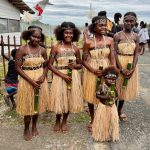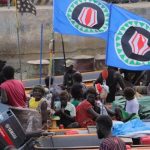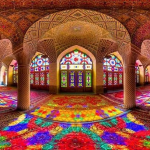YPT tours to Japan
YPT are pleased to announce our 2026 and 2027 Japan Tours and Travel packages, although with a more extreme tint than your average Japanese travel agent.
As one of the biggest economies in the world, as well as one of the most stable, safe and dare we say vanilla countries in the world, Japan might not seem like a Young Pioneer Tours place. Away from this though there is a much more interesting and darker side to Japan that YPT want to introduce you to.
At YPT we want to show you the other weirder side to travel to Japan, so have put together a number of group and independent Japan Tours that do just that. A
Group Tours to Japan
YPT currently offer two group tours to Japan, namely our Fukushima Tour and our Extremes of Japan Tour. The 2026 dates will be confirmed shortly, check this page or send us an email for more information. We are currently exploring expanding this to fit in with various events being held in Japan.
Fukushima & Daiichi Nuclear Power Plant Surroundings Tour, July 30th 2026 – August 1st / 2nd 2026, $600/$750
Extremes of Japan tour, 2nd – 8th August 2026 – $2995 – 6 nights, 7 days
Fukushima & Daiichi Nuclear Power Plant Tour 11th – 13th / 14th October 2026, 2 days / 4 days – $650 / $800
Independent Tours to Japan
Aside from our group tours, YPT can also offer independent tours to Japan. These, of course, include our Fukushima and Extreme Japan Tour, but also much more.
YPT, through its Japan and foreign based team, are now the number one travel agency in Japan offering tours are completely off the beaten track and dare we say a bit whacky! Prices depend on the number of people and what level of accommodation you desire, but YPT can arrange everything you need for perfect and unique independent Japan tours.
Example of a Japan Itinerary (7 days)
The following of our Extremes of Japan Tour. This can be done in its entirety but is also extremely adaptable depending on your needs.
Day 1 – Tokyo, Japan
- Arrival at your own convenience in Tokyo. The capital is Japan is well-connected to the rest of the world thanks to its two international airports, Narita and Haneda
- Our first stop will be the famous Tokyo Tower. At 333 metres, it’s just a hair taller than the Eiffel Tower, but offers a beautiful view of Tokyo and its main skyscrapers. On the horizon, you may see the silhouette of Mount Fuji, 90 kilometres away, if the weather is good.
- We’ll then take the metro – quite an experience, as it’s probably the cleanest and most efficient metro system in the world – to go to the Tokyo Imperial Palace, the main residence of the Emperor of Japan. It is a large park-like area with several buildings where the Emperor has his living quarters and where various ceremonies and receptions take place.
- The Imperial Palace, a symbol of Japan’s history and continuity, has its gardens open to the public for peaceful strolls.
Afternoon
- Not far from there, we’ll visit the infamous Yasukuni Shrine. It serves as a memorial site for over 2.5 million people who died in conflicts, primarily during World War II. It is surrounded by controversy due to the inclusion of 14 convicted Class-A war criminals in the shrine, especially after visits by Japanese prime ministers.
- Next will be the Soka Gakkai Headquarter, a Japanese Buddhist religious movement, sometimes described as a cult, that is still viewed with suspicion in Japan and has found itself embroiled in public controversies.
- For dinner, we’ll go to Sasaya, a restaurant that specializes in fugu. Also known as blowfish or pufferfish, fugu is a delicacy in Japan, but it must be prepared carefully due to its toxicity.
- There’s about as much to do in Tokyo at night than at day, so our itinerary continues with a visit to the Muscle Girls Bar. In this remarkable place, customers sit around the bar counter while muscular and friendly staff in brightly coloured shirts chat with them. During the “muscle show time,” staff members scatter around the room, dance, and cheer to lively music.
- Depending on what services customers order, the main lights will go out, and disco lights will splash rays of colour around the room as staff members dance, flex, and chug protein shakes. That’s the kind of drinking experience we like!
- To stay on the topic of muscles, we’ll then head to the Fightclub Shibuya, the place for you if you like MMA and martial arts. You’ll be able to watch – and even participate in – MMA action while enjoying your drinks.
- If you’re not ready to call it a night yet, we’ll continue to Burlesque Tokyo, a bustling venue with a festive vibe, offering a floorshow, dancing, plus drinks and snacks.
- Overnight in Tokyo
Day 2 – Tokyo
- Breakfast at hotel
- We’ll take a local train to the edge of Tokyo and visit a feat of engineering, the Metropolitan Area Outer Underground Discharge Channel.
- This is one of the world’s largest underground discharge channels. It collects overflow from small to mid-size rivers and directs the water to the Edogawa River through a 6.3 km tunnel running 50 meters below ground.
Afternoon
- After lunch, we’ll head to the Maruha, Pachinko Parlor. Unlike typical pachinko parlours with flashy neon lights and bustling noise, the Maruhan parlor stands out in its modern, well-designed and tastefully decorated building. Rumour has it that this place has ties to the North Korean community and that all winnings go to North Korea.
- If you’re new to pachinko and don’t speak Japanese, the MARUHAN Shinjuku Building is a good place to start playing because staff members are fluent in English, Chinese, Korean, Turkish, and Spanish.
- We’ll then visit Shinjuku Takano, famous for their decadent dessert creations.
- For dinner, we’ll go to the Zauo fishing Restaurant. Here, you can catch and eat your own fish!
- In the past, visitors flocked to the legendary Robot Restaurant in Kabukichō. While it’s now closed, fear not! The new Samurai Restaurant, which recently opened, is equally crazy. More than a restaurant, it’s a two-hour mind-bending show, with drinks included, that you won’t forget anytime soon.
- We’ll finish the evening in the legendary Golden Gai area in Shinjuku. This festive and popular city district is famed for its narrow, winding alleys and numerous snug taverns.
- Overnight in Tokyo
Day 3 – Kuronagi Onsen
- Breakfast at hotel
- We’ll start our journey across Japan with a 3-hour train trip to the Kuronagi Onsen, located in the forests of the Kurobe Gorge, Toyama prefecture,
- Kuronagi Onsen is one of the few mixed onsens (natural public baths) in Japan. They are illegal in Tokyo since 19th century.
- Kuronagi Onsen is a secluded Ryokan (traditional inn) nestled between tall trees on a riverbank. This is the perfect place to experience complete relaxation, with no TV or internet, just the sound of the effervescent Kuronagi River and the smell of the forest.
- After going crazy in Tokyo, soaking in the soothing hot springs and enjoying home-cooked traditional Japanese meals will be much welcome.
Day 4 – Osaka
- Traditional Japanese breakfast in the ryokan
- This morning we’ll again extensively use the amazing Japanese train network for our 5-hour journey to Osaka.
- Lunch in the train
Afternoon
- Osaka is referred to as the “stomach of Japan” due to its amazing food scene.
- We’ll explore Namba District, a bustling area known for its lively atmosphere, just a short walk from the famous Kuromon Ichiba Market and the iconic Dōtonbori entertainment district.
- Stop at the Shinsekai Toei Cinema, one of the last remaining old-style grind house movie theatres in Osaka. Films run almost continuously, with a brief break between 5 am and 9 am. The machine to buy tickets is easy to use: press the yellow buttons samurai movies, blue buttons for pink movies, and red buttons for gay pink movies.
- We’ll have dinner at Akadori Haruka, known for its raw chicken dishes.
- For the evening, we’ll head to Tobita Shinchi, an old red-light district that emerged in the early 1900s. Despite the official prohibition of prostitution in Japan since 1958, Tobita Shinchi retains its authentic character and the old brothels, now officially converted into “Japanese restaurants”, still harbour their true activities with rooms showcasing women behind glass, often dressed provocatively.
- Even if you’re not interested in such services, the district is worth a visit as its atmosphere offers a glimpse into the past, with remnants of the Taisho era (1912-1925) visible in the surviving old wooden buildings adorned with sculptures, billboards, and lanterns.
- We’ll end the day (or the night) in BCB Rock Bar Cherry Bomb, a dive bar that caters to music enthusiasts. The atmosphere is gritty, authentic, and perfect for those who appreciate raw music.
Day 5 – Hiroshima
- Breakfast at hotel
- We’ll take the Shinkansen (bullet train) from Osaka to Hiroshima. The journey takes approximately 1.5 hour and offers scenic views of the countryside.
- On arrival, we’ll check in at the KIRO Hotel Hiroshima. It’s an old hospital’s which structure has been transformed into a minimalist yet vibrant establishment.
- We’ll then transfer to Okunoshima, also known as “Rabbit Island”. Friendly wild rabbits roam freely there, in very picturesque surroundings.
- There’s a darker side to Okunoshima Island. We’ll visit its Poison Gas Museum, a former WWII Lab where you’ll see photos and equipment chronicling the manufacturing of poison gas and its devastating effects during World War II.
Afternoon
- We’ll head back to Hiroshima and visit the Peace Memorial Sites, commemorating the atomic bombing of August 6th 1945, that killed between 80,000 and 150,000 people.
- We’ll also see the Atomic Bomb Dome, a haunting reminder of the atomic bombing. It stands as a UNESCO World Heritage Site and symbolizes peace and resilience.
- For dinner, we’ll go to Lopez Okonomiyaki, a cozy, laid-back eatery specializing in traditional savory pancakes cooked on an open grill. What makes it even more special is that it’s run by a Spanish/English speaker, making it an excellent place to get an introduction to Hiroshima-style okonomiyaki, which is considered the best in town.
- Following the tradition of the last days, we’ll also explore Hiroshima’s nightlife by going to Flat Sake Bar, a great spot to unwind and enjoy sake while enjoying live performances.
Day 6 – Nagasaki
- Breakfast at hotel
- Our last Shinkansen ride will take us from Hiroshima to Nagasaki, a 3.5 hours journey journey that offers scenic views of southern Japan
- The journey takes approximately 3 hours and 30 minutes and offers scenic views along the way.
- On arrival, we’ll check in at the Candeo Hotel. As we are in Japan, and that baths are part of the culture, we chose a hotel with a rooftop open-air bath. How cool is that?
- We’ll then take a ferry across the beautiful Nagasaki Bay to Hashima Island (Gunkanjima).
- Also known as Battleship Island, Hashima is an eerie sightseeing spot. It was once an offshore mining city and one of the densest cities in the world. It is now abandoned, and visitors can tour its overgrown industrial sites, semi-ruined concrete workers’ quarters, and the infamous “stairway to hell.” At the centre of the island, you’ll find a quiet Shinto shrine.
Afternoon
- Back in Nagasaki, we’ll visit the 26 Martyrs Museum, that commemorates the 26 Christians who were martyred in Nagasaki in 1597. The museum showcases documents, mementos, letters, and saint statues collected worldwide, dating back to the 15th century, providing a glimpse into the propagation of Christianity in Japan during that era.
- We’ll then visit the Nagasaki Atomic Bomb Museum, that serves as a remembrance to the atomic bombing of the city on August 9, 1945, at 11:02:35 am. Next to the museum stands the Nagasaki National Peace Memorial Hall for the Atomic Bomb Victims, built in 2003.
- For dinner, we’ll go to Ramen Hiiragi. It serves a special Tomato Ramen that stands out from the usual fare. The tonkotsu-based soup pairs perfectly with grilled chunks of eggplant.
- We’ll celebrate our last evening in Japan at Tatanbaa. The payment system here is quite simple: you place cash inside the bowl in front of you, and subsequent drinks are deducted from it. With more than 100 types of alcohol and snacks starting at 100 yen, it’s a great spot to unwind.
Day 7 – End of tour
- Breakfast at hotel.
- Tour concludes. YPT are able to arrange additional nights in Tokyo and advice for further transport.
Bespoke Japan Tours
As part of our travel packages within Asia, we can offer bespoke and independent Japan tours. These can be done as full Japan tours or be combined with other countries, such as South Korea, China, or even North Korea. We can take you to the weirdest or darkest places the country has to offer. Here are some examples.
Fukushima Tours – Young Pioneer Tours currently offer the most comprehensive and reliable Fukushima Tours, both group and bespoke. We can arrange day trips to the Daiichi Nuclear Power Plant, as well as 2 day tours that explore the surrounding area, as well as longer tours to Fukushima that concentrate on Urbex.
Extremes of Japan Tour – Our classic Extremes of Japan Tour blasts through Fukushima, Tokyo, Mount Fuji, Osaka, Hiroshima and Nagasaki while hitting all the extremes in between. From radioactive landscapes to neon chaos, serene shrines to post-war ruins, this is Japan unfiltered. Do it all in one go, condense it for a rapid-fire adventure, or expand to really take your time. Expect long trains, bizarre roadside stops, and moments you will swear you only see in documentaries. This is the tour for those who want raw, real, and utterly unforgettable Japan, no fluff, just extremes.
Japan By Rail Tours – Japan is a country made for trains, and YPT takes full advantage. Our Japan By Rail Tours cover Hokkaido, Honshu, Shikoku and Kyushu, combining bullet trains, local lines, and scenic branch tracks. Routes from Sapporo to Kagoshima, Nagano to Kanazawa, or obscure rural lines you will not find in guidebooks. We are the cheapest company doing it properly with sleeper trains, insider tips, and zero tourist fluff. Perfect for railway nerds, hardcore explorers, or anyone who wants to see Japan at speed while hitting stops most people miss.
Urban Exploration in Japan – YPT’s Urban Exploration in Japan tours take you deep into abandoned towns, derelict factories, and ghost villages. From rusting mines in Tohoku to deserted Hokkaido hamlets, we go further off the beaten track than most companies dare. Not just sightseeing, this is climbing, exploring, and photographing places that time forgot. Dangerous in parts, thrilling in all, and utterly memorable. If you want Instagram ruins, this is not it. If you want to feel history under your fingers, smell decay, and wander empty streets like a proper explorer, this is your tour.
Okinawa Tours – Sun, surf, WWII ruins, and Ryukyu culture. Our Okinawa Tours show you the islands beyond the resorts with dive bars, hidden beaches, and military bunkers left behind. Sample local awamori, hike remote trails, and watch sunsets over the East China Sea. Okinawa is chaotic, beautiful, and utterly unique. These tours are slow, immersive, and show a side of Japan that does not appear on postcards. History, absurdity, and unforgettable scenery rolled into one. Expect local quirks, random encounters, and moments you will swear do not exist anywhere else in Japan.
Bonin Island Tours – The Bonin Islands are as remote as Japan gets. Accessible only by long ferry or chartered flight, these islands are volcanic, wild, and largely untouched. YPT takes you hiking, exploring abandoned villages, and spotting endemic wildlife. Logistics are tricky, which is why so few companies go there. Beaches, cliffs, and isolation make it extreme. This is one of those tours that delivers total escape, remote, surreal, and completely unique. If you want untouched Japan, Bonin Islands are it. Few dare, we make it happen.
Chongyron Korean Japan Tours – Japan’s hidden North Korean community is fascinating, bizarre, and rarely explored. Our Chongyron Korean Japan Tours take you to Pyongyang-style schools, cultural centers, and community hubs. Expect unusual architecture, quirky traditions, and interactions you will remember long after. This is not standard sightseeing. It is immersive, unusual, and often surreal. Perfect for those curious about politics, culture, or just the very unusual side of Japan. One of the most unique experiences we offer, showing a side of the country almost nobody else visits.
Northern Japan Tours – Northern Japan is cold, remote, and weird in all the best ways. Our tours take you off the beaten track eating bear meat in mountain villages, visiting abandoned fishing towns, and exploring misty forests. Trains, buses, and hidden trails make travel part of the adventure. Extreme landscapes, extreme food, extreme experiences. Hokkaido and northern Honshu are full of surprises, and we take you to all the strangest, wildest corners. For adventurers who do not just want Japan, they want Japan raw, absurd, and unforgettable, this is the tour.
Shinjuku’s Neon Underworld – In this Tokyo based trip, you’ll dive into the vibrant and sometimes seedy nightlife district of Shinjuku. You’ll explore the maze of neon-lit alleys, hidden bars, and unique themed cafes. It’s not just about drinking sake: you’ll also learn about the history of the district and its role in contemporary Japanese culture.
The Former Japanese Navy Underground Headquarters – Located in Tomigusuku (Okinawa), this tunnel complex was dug in 1944 as an underground headquarters for 4,000 soldiers. The 450-metre long complex was used during the desperate battle of Okinawa, until Rear Admiral Minoru Ota and his men committed suicide on June 13th, 1945. The operations rooms haven’t changed at all since 1945 and the walls still bear the traces of the soldiers’ suicides, by grenade or bullet.
Weird Japan Tours – Yes we said it! Weird Japan Tours, of which there are so so many options, not limited to all the abandoned stuff, weird islands and of course suicide places. There are too many Weird Japanese tours to include exactly here, so you can check our our article on the matter. These of course can be combined with our other offerings, or done on a bespoke basis.
School Trips to Japan – Young Pioneer Tours offers tailored school trips to Japan, catering to diverse interests such as history, culture, nature, and science. Students can explore bustling cities, traditional villages, or iconic sites, including specialized Fukushima tours that combine education on natural disasters, nuclear safety, and community resilience. Trips are designed to meet curriculum goals, foster critical thinking, and provide immersive learning experiences, ensuring every student gains a unique perspective on Japan’s past, present, and recovery efforts.
Filming in Japan
Through our media arm Pioneer Media we can make arrangements for productions, journalists, or others to film within Japan from big-budget to guerrilla productions. We can also arrange meetings in country, as well as the correct visas for journalists wishing to do projects within Japan.
Frequently asked questions about travel to Japan
For other nationalities, check the visa requirements: https://www.mofa.go.jp/j_info/visit/visa/short/other_visa.html
It is also possible to buy an eSIM card before arriving in the country. We recommend using the Airalo app, which is easy to use and offers connectivity in most destinations: https://airalo.tp.st/gbmp7zka
In terms of spending money in Japan, it depends on how much you like to eat and how many gifts you would like to buy. Overall, Japan is quite an expensive country – although food is surprisingly cheap -, so make sure to plan enough money for meals and souvenirs. For an entire 7-day trip it’s best to prepare around $400.
While driving in Japan is possible, it's generally considered challenging for visitors due to the complex road system and language barriers. Opting for public transportation or renting a car only if you're experienced and comfortable with driving in Japan can help avoid potential difficulties.
If though you are interested in Dark Tourism, seeing the weird side of the country, or having a really off the beaten track tour to Japan then we are the experts. We have become this through the passion of our staff, as well as out Japanese partners.
Don’t believe us? Then check out not just our packages, but what other companies are offering in Japan. With this in mind we feel that no one else offers Japan tours like YPT do.
Gallery
